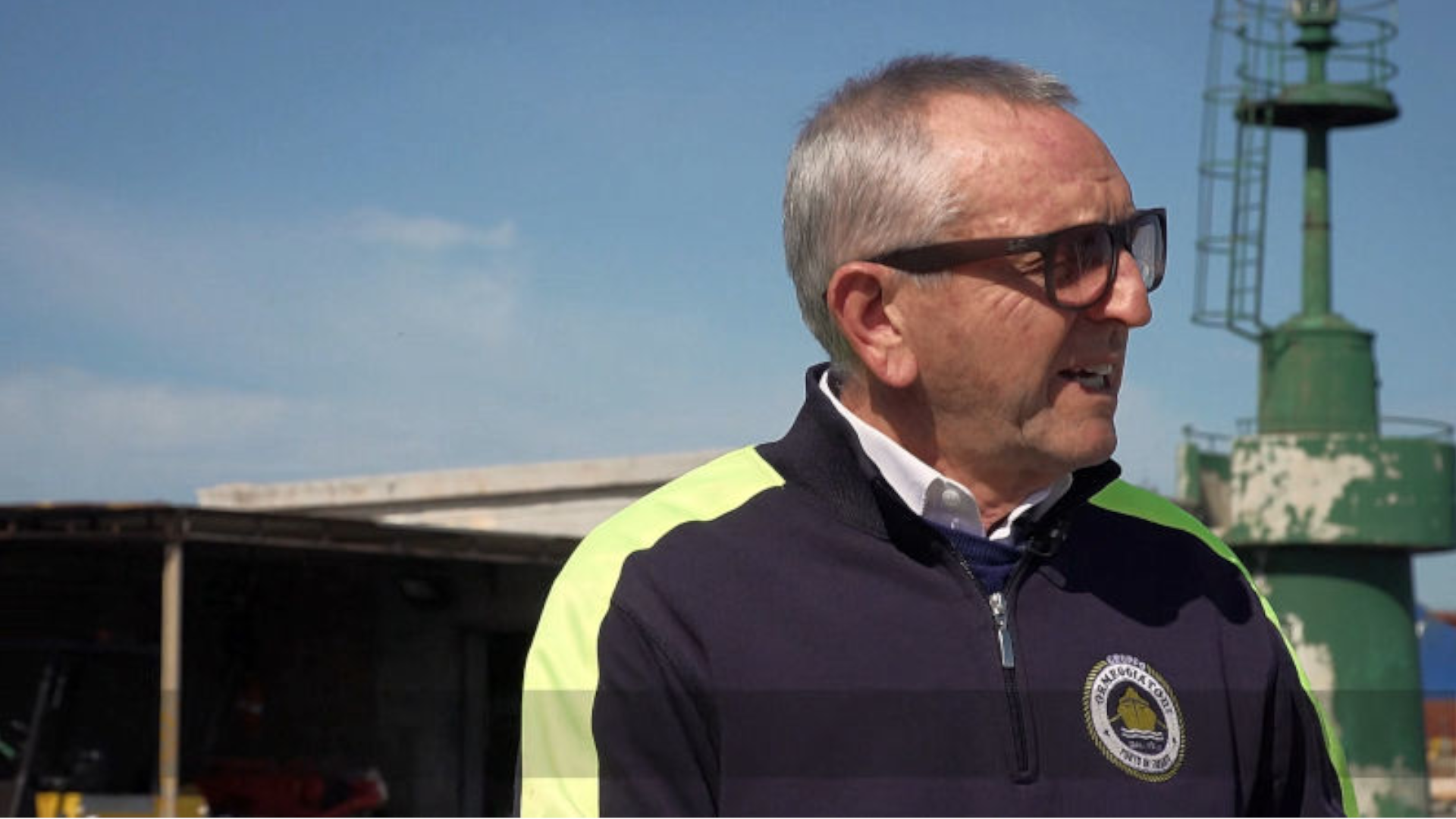Ormeggiatori interview
The Mooring
I am Gianni Puglisi, a long-time captain and President of the Taranto Mooring Cooperative.
The cooperative currently consists of 19 moorers including myself.
For me, as a mooring operator, I’d say this is one of the best jobs in the world.
For working equipment, we currently have five motorboats, and we also have a crane truck equipped with a Bonfiglioli crane, which we use to deploy Yokoamas, which are large fenders, six metres long and about three and a half metres wide,
that are placed between the ship and the quay, and we use these in particular for the many Navy ships that come to Taranto.
The history of the Taranto mooring group
The mooring group was set up by Bari’s maritime director in January 1941 and was based at St Eligius Quay.
Bear in mind that the port of Taranto then was only what we can see here: Quay One, St Catald Quay and part of St Eligius Quay was the port at that time.
Here, where we are standing, there used to be patrol boats belonging to the Harbour Master’s Office and previously, sailing ships moored at the original part of St Eligius Quay, here we’re talking about the years between 1800 and 1900.
In 1941-42, we used to row, today we have twin-engined boats that are also authorised for light towing, i.e. we go out to provide towing services in all the places in the port, in the harbour, where the harbour tugs can’t go because of their draught.
Services provided by mooring companies
The mooring service is defined as the service of mooring, unmooring and moving of ships along quaysides, in order to allow them, i.e. ships, to carry out all their operations in safety, the procedures of embarking and disembarking passengers and cargo.
Keep in mind that the ship, unfortunately in the water, has its own momentum and cannot stop suddenly, and therefore, when the ship reaches a certain distance from the quayside, then the moorers with these motorboats that you can see, which are also a bit unusual, different from the others because they have hooks at the stern, take the cables on board and bring them to the quayside.
Then, once the cables have been secured to the bollards, the boat with its on-board equipment, winches, etc., pulls itself in on those cables and slowly, slowly approaches the quay.
Our operations always follow an order from the Harbour Master, including the collection of anything hazardous to shipping that is adrift.
There are many other activities that are all institutionally regulated.
The mooring groups are authorised to provide assistance to pleasure craft, which some have called the ACI of the sea.
The area of operations
Taranto is a very large port.
We operate from the Air Force jetty, in the second part of the Mare Piccolo, to the multi-sector quay, and we are only talking about the internal side, the distance between these two extreme points of the port is about 20 km, so Taranto has a rather unique layout, allowing mooring and berthing for 70 ships at the same time.
Around the year 2000, with the establishment of TCT Taranto Container Terminal and with Evergreen, we had substantial numbers of ships and annual dockings, and we even reached 7-8 thousand berths annually as a mooring service.
Today we have between 1000 and 2000.
*** Automatically generated subtitles ***


